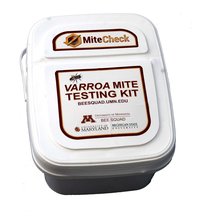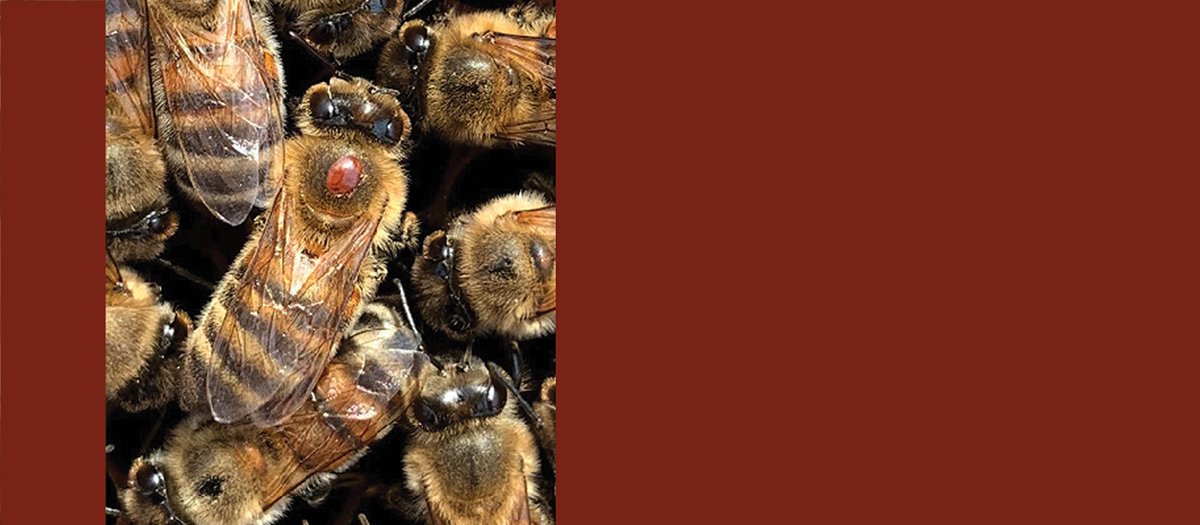
This parasite is present in all honey bee colonies throughout the U.S and most of the world. Varroa harm the bees both by feeding on the developing and adult bees but also by vectoring viruses while they feed. In our area, if beekeepers do not manage their colonies to reduce mite levels, there is a 90-95% chance the colony will die from effects of the mites and the bee viruses they vector. Learn how to monitor and manage these mites to keep colonies healthy!
Varroa Mite Testing & Treatments
Varroa Management
Our long-term goal is to figure out a way to reduce, and eventually eliminate, the use of chemical treatments in bee hives to control Varroa destructor mites. In the meantime, we are saddened when many beekeepers decide not to manage mite levels and their bee colonies die from effects of the mites and the bee-viruses the mites transfer from bee to bee.
One way to manage mite levels is to keep your colonies highly isolated from other bee colonies (over 2-3 miles away from other beekeepers), but this is not feasible in most areas. This isolation will prevent mites from coming into your colony on drifting and robbing bees. As purchased bees come with mites, it is important to manage mites on any bees brought into your location.
Other ways to manage mite levels involve using a combination of screened bottom boards, sticky boards and drone brood removal; these techniques are discussed in the Honey Bee Health Coalition's Varroa Management Guide found on their website. Some beekeepers have success giving their colonies a 30-day brood break during the summer months and wintering nucleus colonies. Two beekeepers that have success with this advanced beekeeping method are Michael Palmer and Adrian Quiney.
We encourage beekeepers to use stocks of bees bred for resistance to mites: Hygienic, VSH (Varroa Sensitive Hygiene), and Russian stocks. However, in areas highly populated with bee colonies and beekeepers, even these stocks will become overrun with mites and viruses if left unchecked. Note: The University of Minnesota Bee Lab does not sell bees. We encourage you to use your local beekeeping organization, bee journals and internet sites that discuss beekeeping to locate different bee stocks.
There are effective naturally-derived treatments to control mites: formic acid (organic), oxalic acid (organic), botanical oils of thymol formulations. These treatments are discussed in the Honey Bee Health Coalition's Varroa Management Guide, and we urge all beekeepers to carefully follow the label on these products.
In all management strategies, it is critical to monitor mite levels before and after treatment. Sometimes the treatments are not effective (e.g., under certain weather conditions, a large amount of sealed brood present). Sometimes colonies become re-infested after an effective treatment because bees enter and rob honey from colonies dying from mites in the area; these robbing bees pick up mites from the dying colonies and bring them back home – discouraging!

How low should mite populations be in your colony? In areas densely populated with beekeepers and bee colonies, mite levels should be kept below 1 mites per 100 bees in the spring and 2 mites per 100 bees the rest of the year. Use the varroa mite testing kit to estimate your colony’s mite levels.
Keep varroa mite levels low year round to give your bees the best chance of survival!

